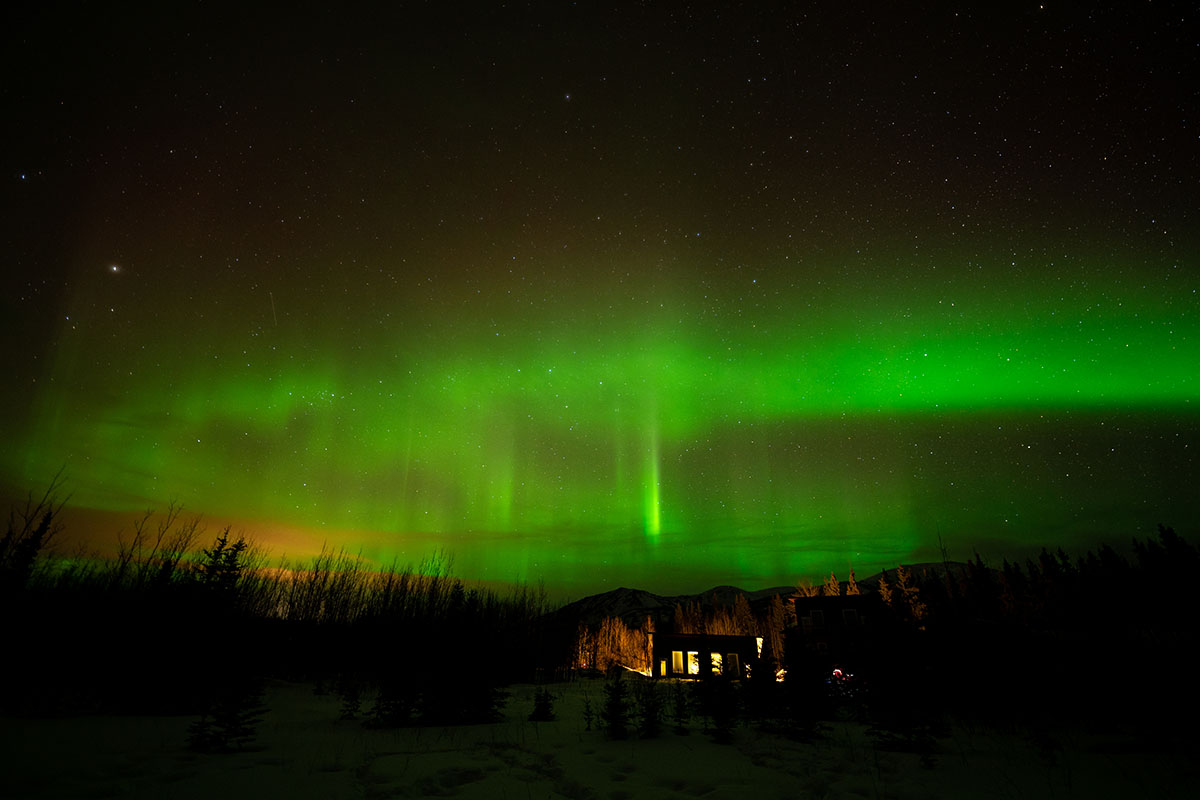Whitehorse is a larger, more accessible hub in the Yukon Territory of Canada, connected by the Alaska Highway and offering a balance of cultural amenities, mountain landscapes, and diverse outdoor activities. Yellowknife is a more remote city on the shores of Great Slave Lake in the Northwest Territory, world-famous for its crystal-clear winter skies and reliable aurora viewing.
Both Northern Light destinations give travellers incredible Canadian winter wonderland experiences — but one might be a better fit depending on whether you prefer convenience and variety, or remoteness and deep immersion in the North.
At a Glance

Credit: ©DCT / Dani
When comparing Whitehorse and Yellowknife, the differences begin with their landscapes. Whitehorse sits in the heart of the Yukon, surrounded by rugged mountains, rivers, and endless forests. Yellowknife, by contrast, is perched on the rocky shores of Great Slave Lake, with open horizons and a more remote feel.
Here’s a quick traveller-focused comparison:
| Feature | Whitehorse | Yellowknife |
| Geography & Landscape | Mountain views, Yukon River, accessible wilderness | Lakeside city, flat terrain, vast skies |
| Climate & Sunlight | Variable winters, slightly milder temperatures | Colder but sunnier with clearer skies |
| Aurora Viewing | Accessible tours with variety and comfort | Remote immersion with wide-open horizons |
| Accessibility | Road and air access, easier connections from Vancouver, more flight availability. | Primarily fly-in from Vancouver or Toronto, with limited routes and frequency |
| Activities | Hot springs, dog sledding, cultural tours | Ice fishing, Snowking Festival, Indigenous experiences |
| Travel Costs | Generally more affordable flights | Higher costs due to remoteness |
Northern Lights Experience
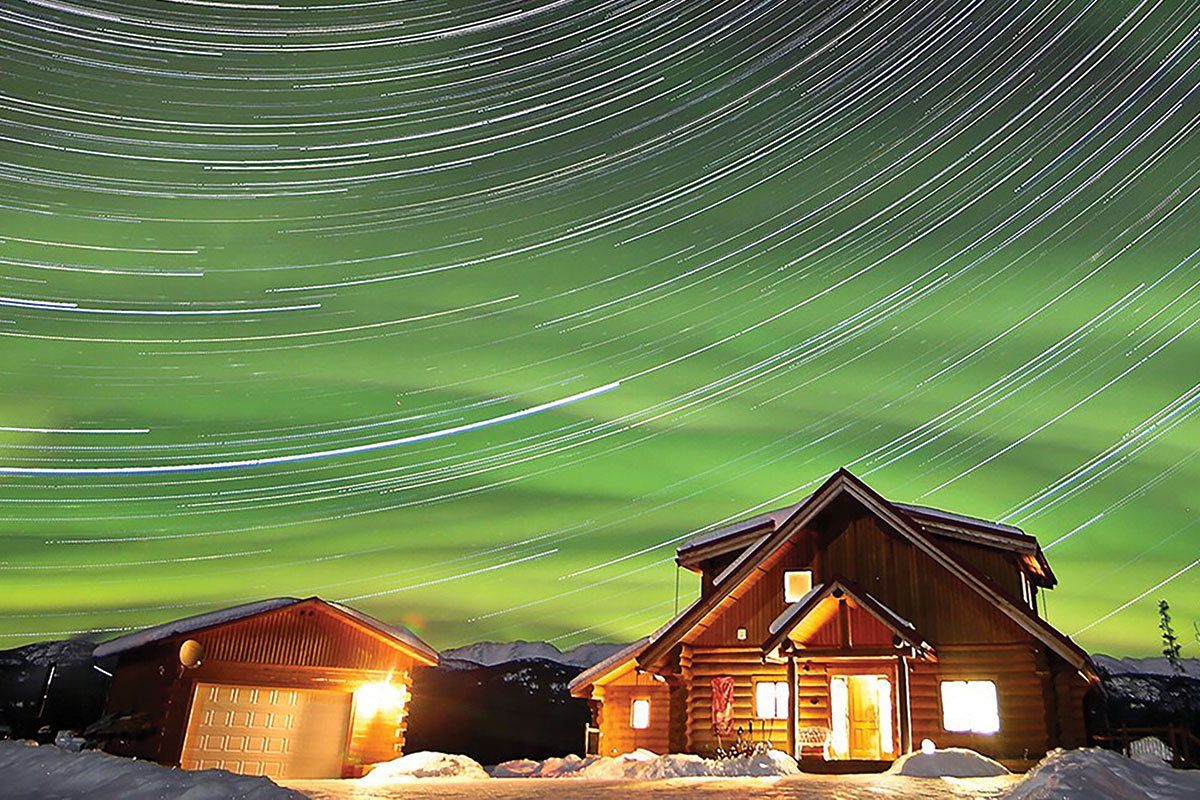
Credit: ©Northern Lights Resort Spa / Wolfgang Bublitz
In Whitehorse, Yukon, the northern lights are often part of a wider adventure. Travellers can join guided tours that take them just outside the city, where cosy wilderness lodges and heated cabins with minimal light pollution offer the perfect setting to watch the sky come alive.
For example, our Yukon Northern Lights Retreat and Yukon Deluxe Winter Northern Lights packages allow travellers to watch the aurora from right at their lodge––no nightly bus required. Unlike Yellowknife, where most accommodations are in town and a bus is needed each night to reach optimal viewing locations, these packages offer a seamless, private aurora experience right from your doorstep.
What makes Whitehorse especially appealing is the variety—you can pair aurora viewing with dog sledding, snowshoeing, or even soaking in natural hot springs, creating a complete northern experience that blends comfort with adventure.
And if you travel in the summer, our Yukon Deluxe Summer Lakeside Adventure offers a unique experience under the midnight sun, with lakeside activities and long daylight hours for travellers to fully explore the stunning wilderness.
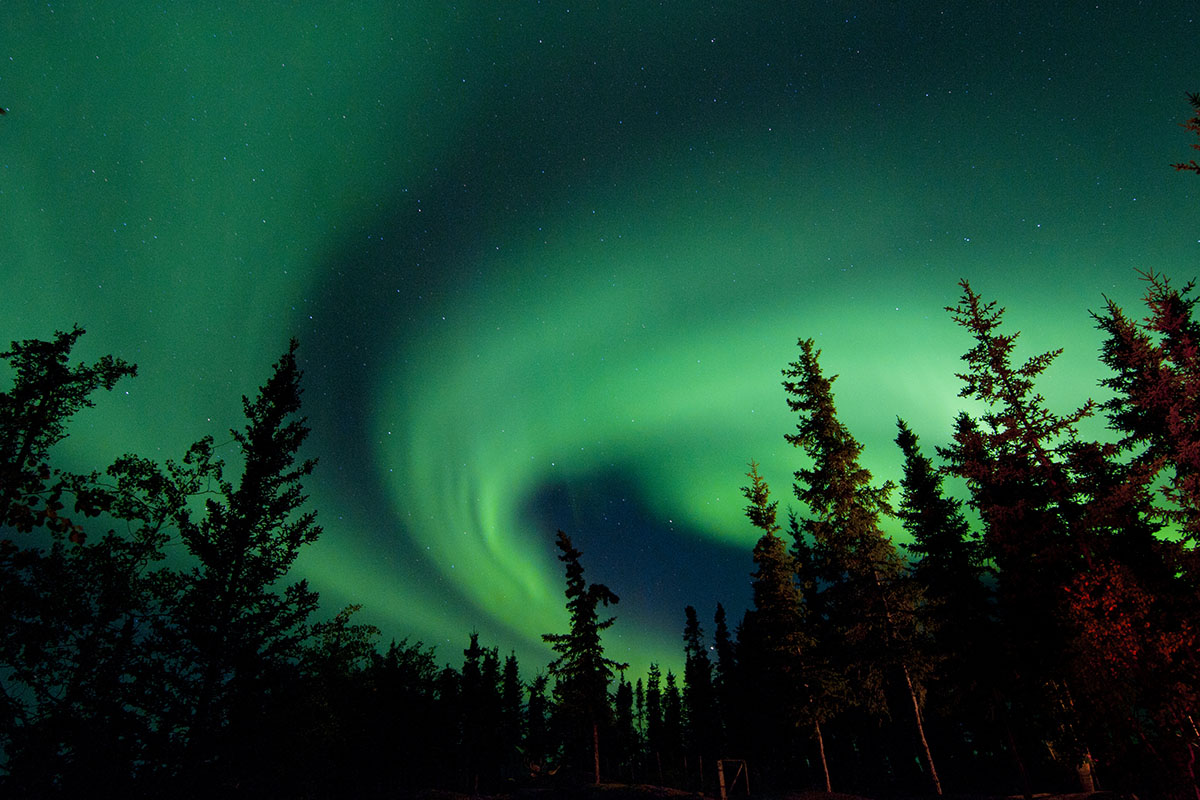
Credit: ©NWT Tourism / J.F. Bergeron
Yellowknife, on the other hand, is famous worldwide for its aurora. With clear skies up to 240 nights a year, it’s earned a reputation as one of the best places on earth to witness the northern lights. Many visitors choose to stay in dedicated aurora villages set on the frozen lake, where teepees, heated shelters, and wide-open horizons create stunning viewing conditions.
Learn more about our Yellowknife aurora tours.
Tip: To make the most of your northern lights experience, it’s essential to know how to photograph this mesmerizing phenomenon. Our guide on photographing the northern lights offers useful tips and techniques to help you capture stunning images of the aurora borealis.
Winter Wonderland & Seasonal Activities
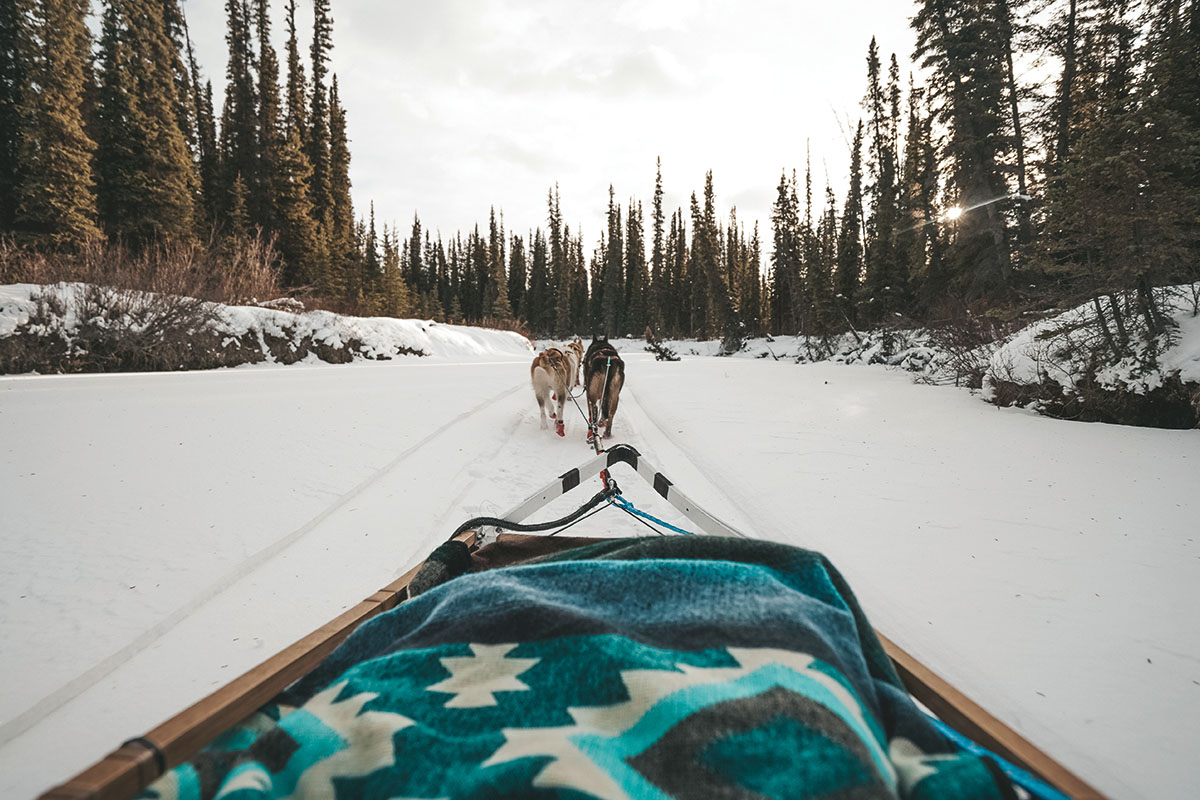
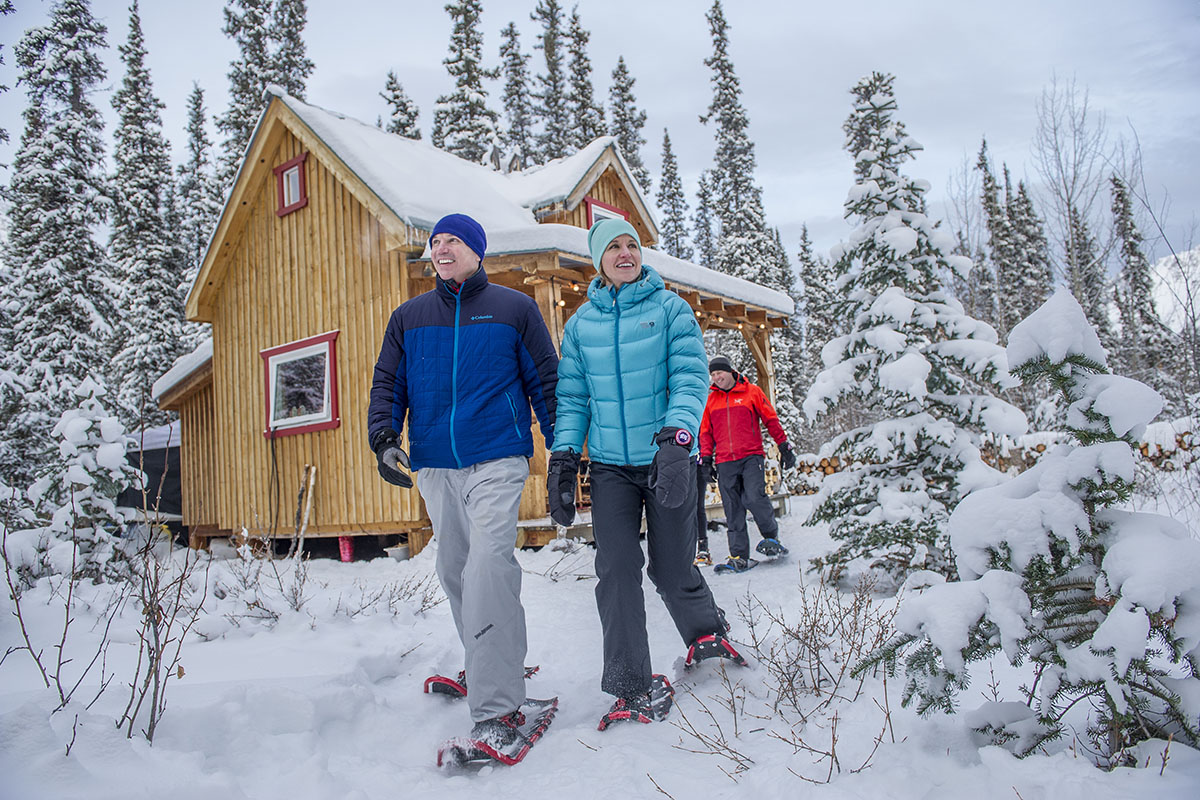
Credit: ©DCT / Dani, ©Gov’t. of Yukon
Winter brings magic to both cities, but the experiences differ.
In Whitehorse, Yukon, adventure feels varied and accessible. You might spend the day dog sledding through snowy forests, take a quiet snowshoe hike in the mountains, or relax in steaming hot springs under the night sky. Summer brings even more options, from hiking and canoeing to road trips along the Alaska Highway.
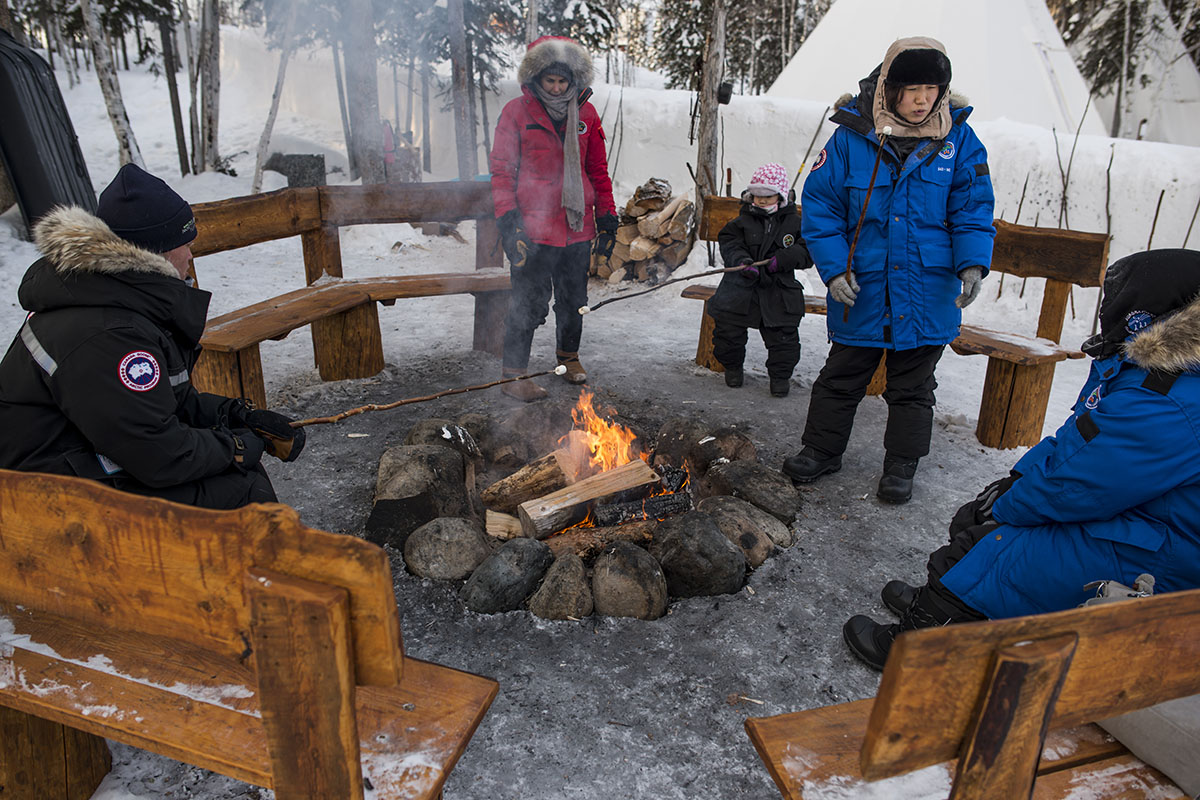
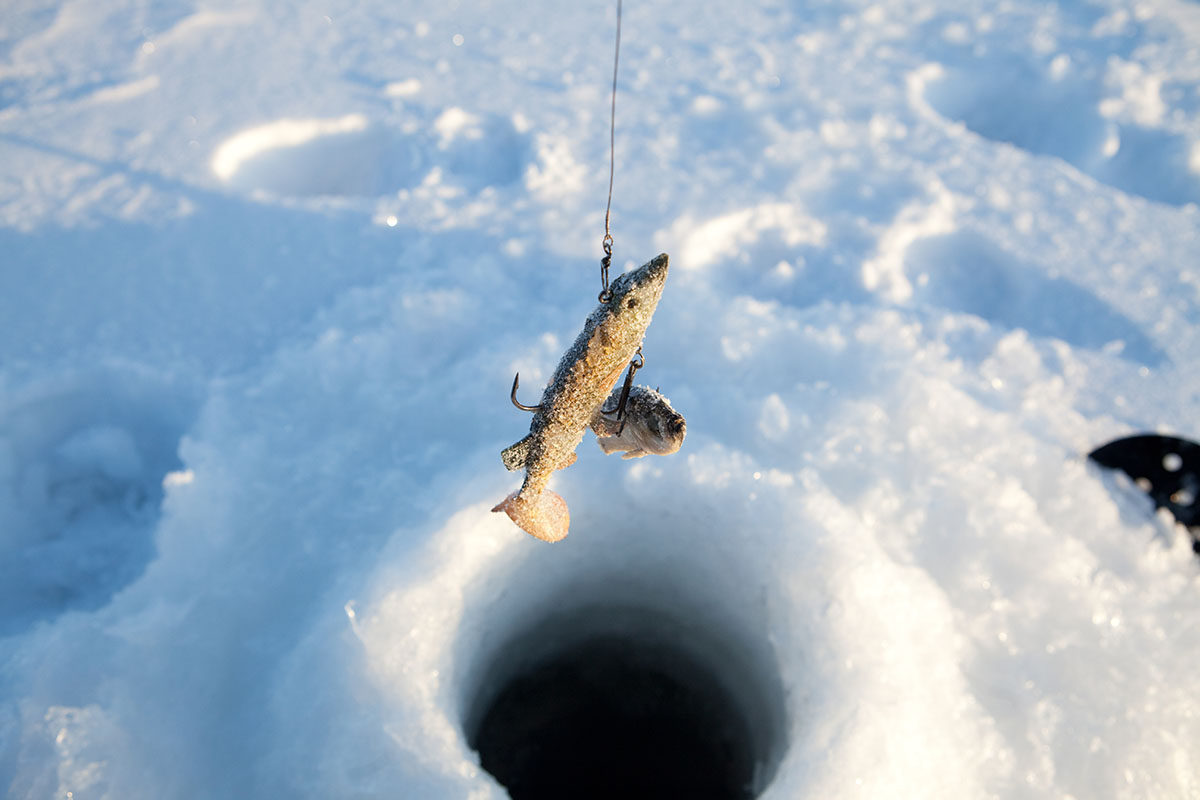
Credit: ©NWT Tourism / Adam Pisani, ©NWT Tourism / CTC
Yellowknife leans more heavily into Arctic traditions. Life revolves around the ice—snowmobiling across Great Slave Lake, fishing through hand-carved holes in the ice, or stepping into an Indigenous cultural tour to learn traditional skills. The Snowking Winter Festival, with its hand-built ice castle, is a highlight, while summer travellers can paddle or fish on waters so vast they feel like oceans.
Whitehorse shines with variety, while Yellowknife immerses you more deeply in life on the edge of the Arctic.
Accessibility – How to Get There
Travel logistics are often the deciding factor.
Whitehorse
- Daily direct flights from Vancouver, Calgary, Edmonton, and even Alaska
- Road access via the Alaska Highway for self-drivers and RV travellers
- Wide range of guided tours departing directly from the city, making it easy to explore without a car
- More affordable flight options overall
Yellowknife
- Primarily a fly-in destination, with regular flights from Edmonton, Calgary, and Vancouver
- Seasonal winter roads connect it briefly by land
- Higher travel costs due to fewer airlines and routes
If ease and affordability are important, Whitehorse has the advantage. But if you want the adventure of flying into a more remote northern hub, Yellowknife adds that sense of remoteness right from the start.
When to Plan Your Trip
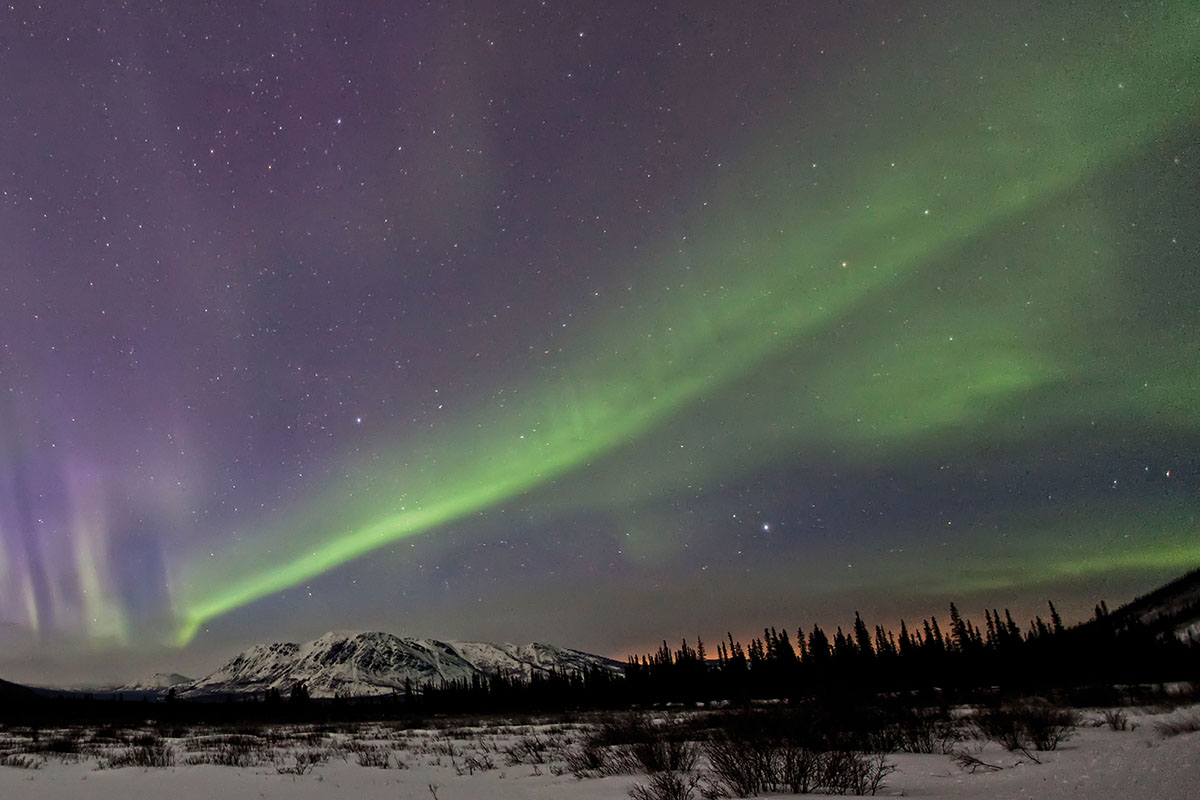
Credit: ©Gov’t. of Yukon / Robert Posma
The timing of your visit to Whitehorse, Yukon or Yellowknife is key to making the most of your northern adventure. Winter, from late August through mid-April, is the prime season for aurora viewing and snowy outdoor activities. Knowing typical temperatures and seasonal highlights will help travellers plan the perfect itinerary for Canada’s North.
Best time for aurora viewing
- Whitehorse: late August to mid-April
- Yellowknife: mid-August to late April (with November–March being the clearest)
Typical winter temperatures
- Whitehorse: –15°C to –20°C, slightly milder temperatures
- Yellowknife: –20°C to –30°C, colder but sunnier
Seasonal highlights
- Whitehorse: Yukon Quest Dog Sled Race (February), Adäka Cultural Festival (summer)
- Yellowknife: Snowking Winter Festival (March), Folk on the Rocks music festival (July)
Which Destination Should You Choose?
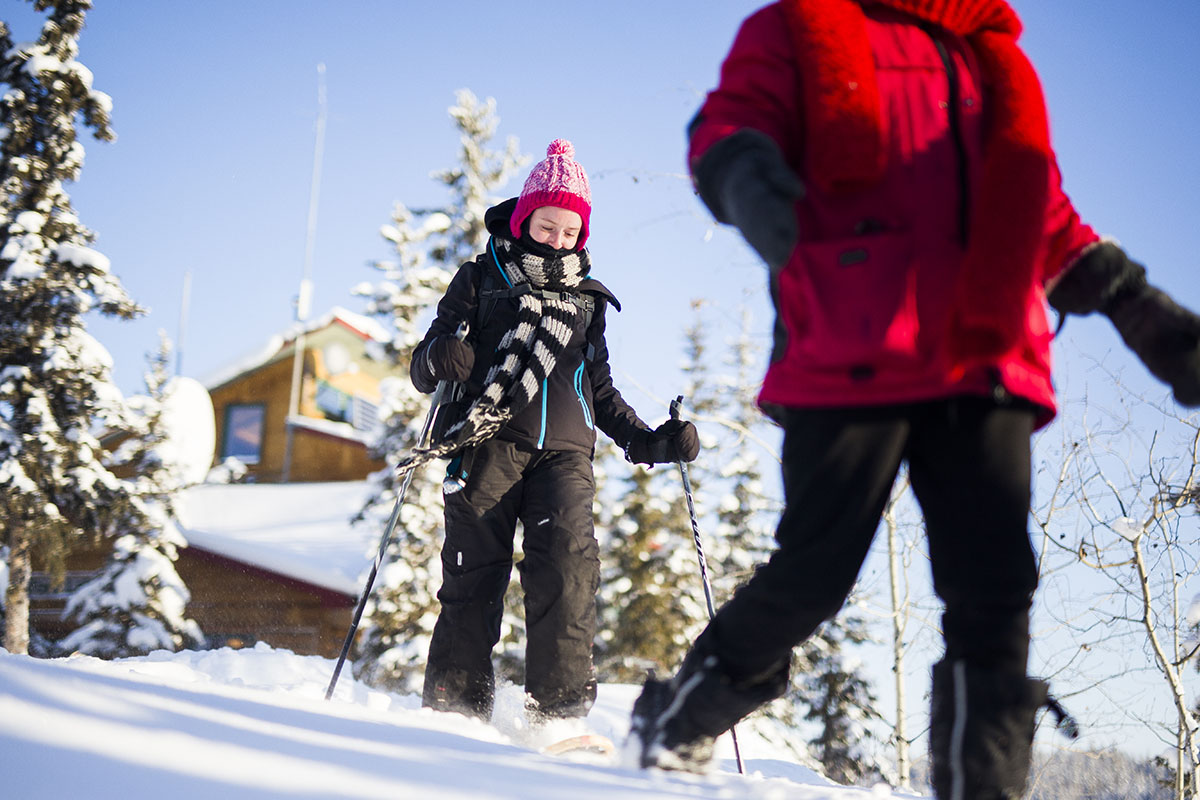
Credit: ©NWT Tourism / Martina Gebrovska
Choosing between Whitehorse and Yellowknife depends on the kind of northern adventure you’re after. Both destinations offer stunning winter landscapes, cultural experiences, and excellent aurora viewing, but each has its own character.
Choose Whitehorse, Yukon if…
- You want a mix of wilderness adventure and modern amenities.
- Easy road or air access matters to you.
- You like variety: hot springs, dog sledding, cultural festivals, and road trips.
- You want a curated winter experience—like our Yukon Deluxe Winter Northern Lights package, which combines aurora viewing, dog sledding, and snowshoe excursions for a seamless northern getaway.
- You would like a chance to visit Vancouver at the same time.
- Budget-conscious and prefer a more flexible travelling itinerary and an inclusive package that includes flights.
Choose Yellowknife if…
- Aurora hunting is your number one goal
- You are more adventurous and wish to seek a remote, small-town experience on Great Slave Lake.
- You’re ready for colder but sunnier winters with reliable aurora conditions.
- You don’t mind multiple connections and more limited schedule options.
For more traveller perspectives, you can see what people are saying on Quora or check out suggestions from the Reddit community.
No matter which city you choose, you’ll experience the magic of Canada’s North—towering landscapes, vibrant culture, and the chance to watch the northern lights dance across the sky.




